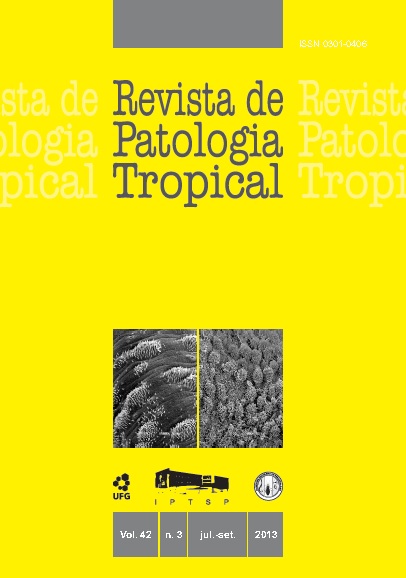IMPACT OF ANTIPARASITIC TREATMENT ON THE PREVALENCE OF ECTOPARASITES IN DOGS FROM AN INDIGENOUS TERRITORY, STATE OF PARANÁ, BRAZIL
DOI:
https://doi.org/10.5216/rpt.v42i3.26923Keywords:
Ectoparasites, Dogs, Myiasis, Indigenous territory, IvermectinAbstract
We report on surveys of ectoparasites in dogs from an indigenous village of the state of Paraná, southern Brazil, before and after ivermectin treatment. From April through June 2008, we conducted a baseline survey to evaluate 145 of an estimated population of 200 dogs. The dogs received parasitological and clinical examinations, and were treated with up to four doses of ivermectin. In September 2008, we conducted a monitoring survey with 83 dogs, to assess the impact of treatment on the prevalence of ectoparasitosis. The initial investigation found 9 taxa of ectoparasites in 37.9% of dogs examined. The most prevalent ectoparasitosis was myiasis caused by larvae of Dermatobia hominis (28.9%). Clinical evaluation showed that 51% of the dogs had signs of scabies, and 48.9% had alopecia. The follow-up monitoring survey found a similar overall prevalence of ectoparasites (40.9%); D. hominis (22.9%) remained the most frequent, followed by Ctenocephalides felis felis (18.1%). However, the signs of sarcoptic mange (12.0%) were significantly reduced (p<0.0001) by the antiparasitic treatment. After treatment, 51.3% of the animals had no ectoparasites. These results indicate that the dogs of this indigenous village continue to be important hosts for ectoparasites, in spite of clinical improvement after ivermectin treatment.Downloads
Downloads
How to Cite
Issue
Section
License
The manuscript submission must be accompanied by a letter signed by all authors stating the full name and email address, confirming that the material has not been published or is under consideration for publication elsewhere, and agreeing to transfer copyright in all media and formats for Journal of Tropical Pathology. The authors will not be paid for published articles. They are solely responsible for the content of those articles, even if the Editor holds the right to adjust them to the norms of the journal.
The reviewers will not be paid for the peer review process.

